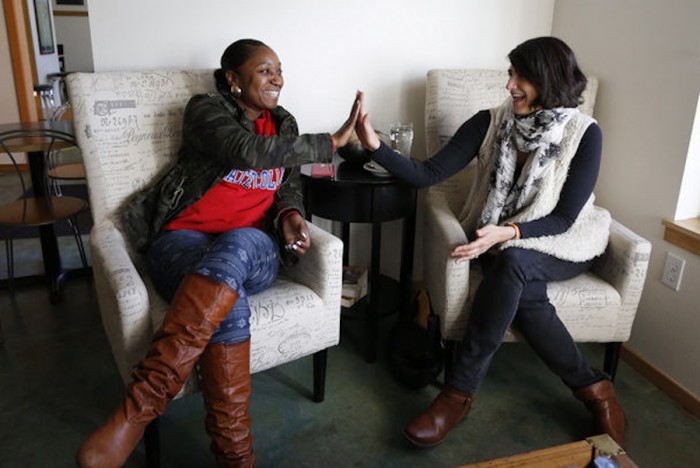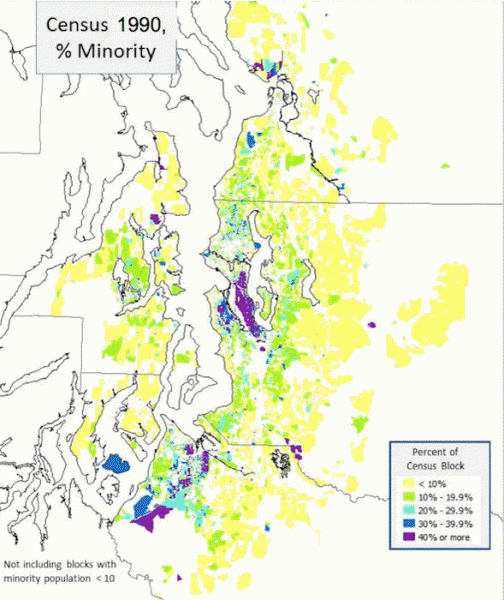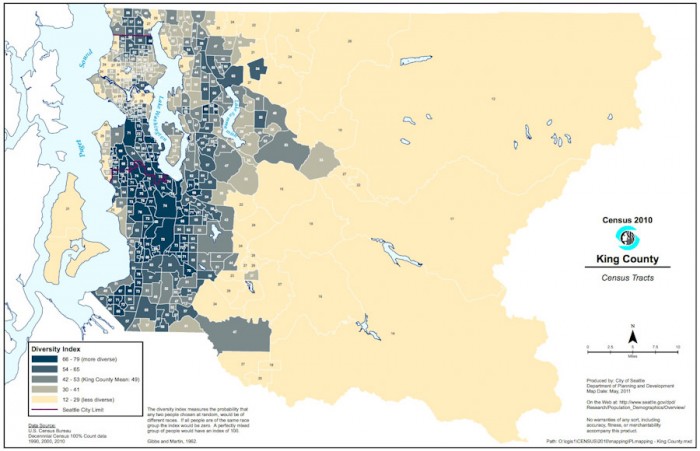
I often hear Seattle described as a “white city.” It comes from a variety of sources (white people and people of color, natives to Seattle and transplants), but it always strikes me as tone-deaf and, frankly, incorrect.
Writing this column is as likely to take me to a Somali community center in the South End as it is to a Syrian Orthodox Church in North Seattle — and sometimes to both on the same day. Every time I hear “white city,” I point out that almost 20 percent of our city’s population is foreign-born, that we’re home to some of the most diverse ZIP codes in the country and that we have one of the fastest growing immigrant and refugee populations.
So when fellow Seattle Times writer, “FYI Guy” Gene Balk, reported on recent census data that suggested Seattle is “getting whiter,” I was confused and left wondering, “How can all these numbers be true at once?”
Turns out that, like many heated debates in this mercurial town (Is density good or bad? Are Seattleites friendly or standoffish? Is our Mexican food delicious or lacking?), one’s impression of diversity in Seattle often comes down to where you live.

“Let me go through these three slides, with purple being the most diverse (areas),” says King County demographer Chandler Felt while laying down three maps of our region dotted with digital rainbow splotches. “Look at 1990, now 2000, now 2010,” he says as I watch the purple and blue patches (representing the most diverse areas) bloom dramatically over time.
Chandler is deeply skeptical of the recent census data, which shows an uptick of almost 2 percent in Seattle’s non-Hispanic white population (from 65.2 percent to 67 percent of the city’s overall population) over the past year. He suspects the influx of white people is an anomaly rather than a trend, but he’s also concerned that census categories don’t capture the unique international diversity of our region, pointing out that many new Middle Eastern and Eastern European arrivals to our city may be included as “white.”
“You don’t know who’s foreign-born,” says Cuc Vu, director of the recently expanded Office of Immigrant and Refugee Affairs in downtown Seattle. Vu shares Chandler’s concerns over the census’ “white” category and adds that the “black” category also doesn’t differentiate between native-born African Americans and our city’s growing East African community.
But while one can argue terms and trends, everyone agrees on one powerful fact: Most of Seattle’s diversity is actually outside of Seattle. In the past 13 years, the total population of people of color inside the city limits has increased 20 percent (the national average is more like 37 percent). By contrast the total population of people of color in the suburbs of Seattle has grown 93 percent — more than double the nationwide rate.
“To look only at the city, I think, is not that useful because the lines are fluid between where we work and where we live and where we play,” says Vu. “It does suggest that there are some socioeconomic trends that are driving some movement of people.”
Vu says newcomers to our region, many of them people of color, are often attracted to suburban areas where they find more affordable (and more family-friendly) housing, good schools and growing international business districts.

Inside the city limits diversity (and lack thereof) is concentrated in certain areas. To illustrate this Chandler brings my attention back to his series of maps.
“This time watch right here,” he says pointing at neighborhoods between the Ship Canal and Lake City (including Greenwood, where I grew up). While the rest of the region became significantly more diverse over this period of time, these neighborhoods did not. “When Gene Balk talks about Seattle getting whiter, a lot of it is happening here.”
Alternately, Patrice Thomas of SEED, an organization devoted to supporting community development and diversity in Southeast Seattle, says her daily experience living in the 98118 ZIP code is defined by diversity.
“(I) walk out of my front door and have the option to either get Somali, Ethiopian, Italian, a burger or a fish … from Saar’s [an Asian market],” she says while sitting at Kaffa, an Ethiopian coffee shop and wine bar on Rainier Avenue South.
Still think Seattle is a “white city”? It might just be the neighborhood you’re in.


When people say Seattle is getting whiter, it’s because nobody has much of a reason to visit anywhere South of I-90. Virtually of Seattle’s most iconic destinations are in the areas that have remained white.
Among the 50 largest US cities, Seattle’s black household income is ranked in the bottom 9th. In 2012, Seattle’s median income soared to $70,200 while black income NOSE-DIVED to $25,700!!! Progressive? I phucking think not! Seattle is deeply in denial about its ANTI-black sentiment. Ignorant privileged white devils say it’s about education but that didn’t make a difference for this educated negro during his NIGHTMARE in Seattle. I know what I saw and felt in Seattle and it was just BAD. Seattle hates black men, period. I don’t give a damn if its a white city or not, black men will SUFFER in Seattle. The End.
Seattle is the 5th whitest city in America. It has the most regressive taxes in the nation. Seattle is becoming whiter every year and shedding diversity: http://blogs.seattletimes.com/fyi-guy/2014/10/27/seattle-is-getting-whiter-census-finds/
Of course white fake-progressives in Seattle like to imagine themselves as diverse, cultured, and post-racial, but it isn’t true.
Seattle is full of latent, passive-aggressive racism – experienced by myself and every other person of color I know. Its immigrant communities you mention are continually being displaced, segregated into narrower corridors, and underrepresented by Seattle’s pseudo-libertarian, faux-liberal, pro-corporate politicians.
Seattle is one of the whitest big cities in America. It seems like Sarah Stuteville is a self hating white person who doesn’t like this fact, so she wants to make Seattle out to be some diversity utopia. Nope, it isn’t a diversity utopia, it never was. Deal with it.